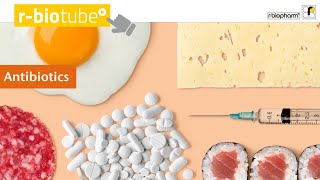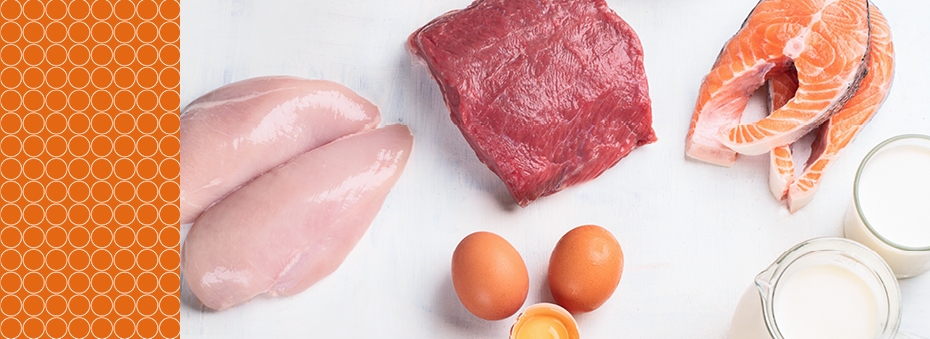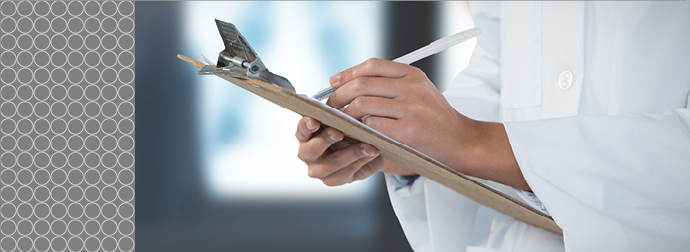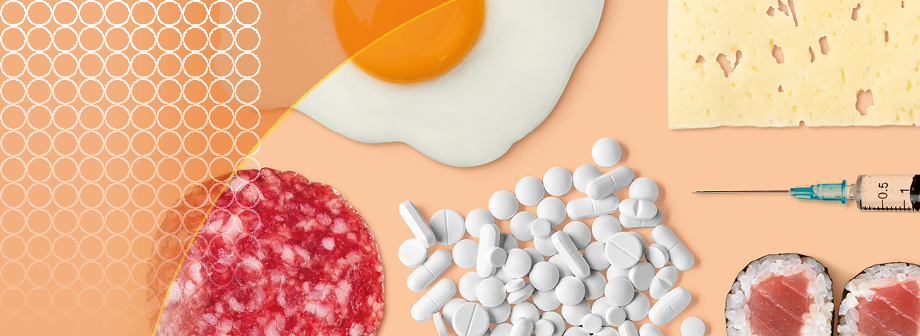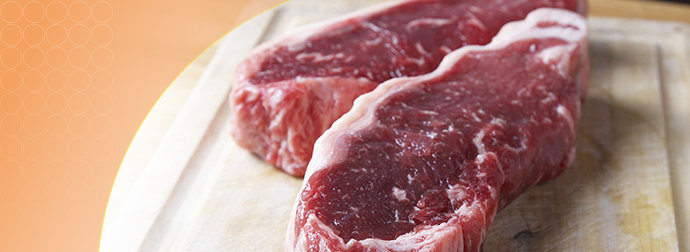
Antibiotic residues
Reliable tests for the detection of antibiotic residues in food
- Home
- /
- Analytes
- /
- Residues and contaminants
- /
- Antibiotic residues
Antibiotic Residues: Monitoring and Analysis
Importance of monitoring antibiotic residues
Antibiotic residues in food of animal origin, such as milk, eggs, and meat, pose a potential health risk to consumers. To address this, R-Biopharm offers a comprehensive portfolio of test systems for analyzing antibiotic residues.
Nature and use of antibiotics
Antibiotics are naturally formed metabolites derived from fungi or bacteria. Additionally, antibiotics produced through modern biotechnology and chemical synthesis also exist. These substances can kill microorganisms or inhibit their growth, making them essential in human and veterinary medicine for treating bacterial diseases.
Origin and health risks of antibiotic residues in food
The use of antibiotics to treat diseased animals is necessary for animal welfare. However, residues of antibiotics can occur in food of animal origin due to application failures, such as non-compliance with statutory waiting periods or misuse as growth promoters. The presence of antibiotic residues in food can lead to several health risks:
- Carcinogenic and toxic properties: Antibiotic residues can pose carcinogenic and toxic risks to consumers.
- Allergic reactions: These residues have the potential to trigger allergic reactions in sensitive individuals.
- Antibiotic resistance: Inappropriate use of antibiotics promotes the development of multi-drug resistant pathogenic bacteria, complicating treatment in human medicine.
- Economic risks: Antibiotic residues can inhibit biotechnological production processes, such as those involving starter cultures in the dairy industry, posing a risk to production safety and economic viability.
Legal regulations
To protect consumers, many countries have established Maximum Residue Limits (MRLs) for pharmacologically active substances and monitor compliance through surveillance programs. Relevant regulations include:
- Directive 96/23/EC
- Regulation (EC) 470/2009 and 37/2010
- Decision 2003/181/EC
Additionally, an increasing number of countries have prohibited the use of antibiotics as growth promoters.
Test systems for antibiotic residue analysis
R-Biopharm offers several test systems for the detection of antibiotic residues, including:
| RIDASCREEN® | Premi®Test |
|---|---|
| RIDASCREEN® ELISA tests allow specific quantitative analysis of single antibiotics or antibiotic groups by immunological antibody-antigen recognition and readout by microtiter-plate photometer. | Premi®Test, based on the growth inhibition of spores by antibiotics, offers a simple and cost-effective qualitative screening for a broad spectrum of antibiotics. |
More information on specific antibiotics
R-Biopharm offers a portfolio of test systems for the analysis of many different antibiotics. Click on one of the following antibiotics to learn more about it.
Importance of monitoring bacitracin residues
Bacitracin belongs to the group of polypeptide antibiotics. It was named after the Bacillus strain producing it and the 7-year-old girl ‘Tracy’ from whose open tibial fracture the strain was first isolated in 1945.
Nature and use of bacitracin
Bacitracin is a mixture of different polypeptides, with bacitracin A being the major component with the highest biological activity. It has a broad-spectrum bactericidal effect against both gram-positive and gram-negative bacteria by inhibiting cell wall synthesis. Bacitracin is used in veterinary medicine and can also be used as an antimicrobial growth promoter in animal husbandry. However, residues can remain in animal-derived food products, posing health risks to consumers. Improper use of antibiotics also promotes the formation of antibiotic-resistant bacteria, a growing health concern.
Regulatory compliance and consumer protection
Due to these risks, bacitracin has been removed from the list of approved animal feed additives (Directive 70/524/EEG Appendix B) by Regulation 2821/98/EC, and maximum residue limits in foodstuffs have been established (Regulation 37/2010/EC).
Integrated Monitoring Approach
R-Biopharm offers a broad portfolio of test systems for the analysis of antibiotic residues, including bacitracin, to ensure food safety and regulatory compliance. These systems include RIDASCREEN® ELISA tests for specific quantitative analysis and Premi®Test for qualitative screening.
Importance of monitoring quinolone residues
Quinolones (or chinolones) are a family of synthetic broad-spectrum antibiotic drugs known as gyrase inhibitors due to their inhibition of the gyrase enzyme.
Nature and use of quinolones
Quinolones are divided into four subgroups, with the majority belonging to the fluoroquinolone subgroup. Fluoroquinolones have a fluoro-group attached at the central ring system, typically at the 6th position, and are classified as second-generation quinolones. These antibiotics are used in veterinary medicine for food-producing animals, including cattle, pigs, and chickens, due to their broad-spectrum efficacy against various bacterial species.
Regulatory compliance and consumer protection
The widespread use of fluoroquinolones in food-producing animals, particularly in chicken, swine, and fish/shrimp farming, has led to increased microbial resistance. Consequently, this resulted in amendments to Council Regulation (EEC) No 2377/90 and the introduction of Maximum Residue Limits (MRLs) for some fluoroquinolones to ensure food safety and public health.
Integrated Monitoring Approach
R-Biopharm offers a broad portfolio of test systems for the analysis of antibiotic residues, including quinolones, to ensure food safety and regulatory compliance. These systems include RIDASCREEN® ELISA tests for specific quantitative analysis and Premi®Test for qualitative screening.
Importance of monitoring chloramphenicol residues
Chloramphenicol is a broad-spectrum antibiotic widely used in animal production due to its excellent antibacterial and pharmacokinetic properties. However, its use poses significant health risks to humans, leading to its prohibition in food-producing animals.
Nature and use of chloramphenicol
Chloramphenicol (2,2-dichloro-N-[(1R,2R)-1,3-dihydroxy-1-(4-nitrophenyl)propan-2-yl]acetamide), produced by Streptomyces venezuelae, was first discovered in 1947 and has been used in veterinary medicine since the 1950s. Despite its effectiveness and low cost, the use of chloramphenicol (CAP) in food-producing animals is illegal in the EU and many other countries due to its severe side effects in humans.
Health risks and regulatory compliance
Chloramphenicol residues in humans can cause myelosuppression, damaging the bone marrow, and potentially lethal chloramphenicol-induced aplastic anemia. Due to these risks, no safe residue level has been established for chloramphenicol, leading to a complete ban on its use in food-producing animals and a zero-tolerance policy for its residues. The EU has established a Minimum Required Performance Limit (MRPL) of 0.3 ppb for all test systems.
Chemical structure and detection
Chloramphenicol has eight different stereoisomers, but only one (RR-p-CAP) is biologically active. The RIDASCREEN® Chloramphenicol quantitative ELISA test kit is specific to this active stereoisomer. This test kit is validated for a wide variety of matrices, including milk, milk powder and milk products, honey, meat, fish, shrimp, eggs, feed, plasma, and serum. Additionally, the new version R1511 can detect the metabolite chloramphenicol glucuronide, allowing for direct screening of urine.
Integrated Monitoring Approach
R-Biopharm offers a comprehensive portfolio of test systems for the analysis of antibiotic residues, including chloramphenicol, to ensure food safety and regulatory compliance. These systems include RIDASCREEN® ELISA tests for specific quantitative analysis and Premi®Test for qualitative screening.
Nitrofurans are synthetic broad-spectrum antibiotics frequently used in animal production due to their excellent antibacterial and pharmacokinetic properties. They have also been used as growth promoters in shrimp, poultry, and pig production.
Health risks and regulatory compliance
Long-term animal experiments have shown that nitrofuran parent compounds and their metabolites have carcinogenic and mutagenic characteristics. This led to the prohibition of nitrofurans for treating animals used in food production. In 1993, the EU banned the nitrofurans furaltadone, nitrofurantoin, and nitrofurazone, followed by furazolidone in 1995. The analysis of nitrofurans is based on detecting tissue-bound metabolites, as the parent compounds are rapidly metabolized and difficult to detect accurately. These metabolites remain in the tissue for a long time after administration and are used to detect nitrofuran abuse.
Types of nitrofurans and their metabolites
- Nitrofurantoin: 1-Aminohydantoin (AHD)
- Furaltadone: 3-Amino-5-morpholinomethyl-2-oxazolidinone (AMOZ)
- Furazolidone: 3-Amino-2-oxazolidinone (AOZ)
- Nitrofurazone: Semicarbazide (SEM)
Prior to analysis, the metabolites must be derivatized by incubation with 2-Nitrobenzaldehyde into NP-AHD, NP-AMOZ, NP-AOZ, and NP-SEM.
Integrated Monitoring Approach
R-Biopharm offers a broad portfolio of test systems for the analysis of antibiotic residues, including nitrofurans, to ensure food safety and regulatory compliance. These systems include RIDASCREEN® ELISA tests for specific quantitative analysis and Premi®Test for qualitative screening.
Importance of monitoring β-lactam antibiotic residues
β-Lactam antibiotics are named after their characteristic five-membered β-lactam ring and form a large group of antibiotics. They are classified by their chemical structure into several subgroups, with the most important being penicillins, cephalosporins, and carbapenems.
Nature and use of β-lactam antibiotics
Penicillins, discovered accidentally in 1928 by Alexander Fleming, inhibit the cell wall synthesis of gram-positive bacteria. Despite their early discovery, penicillins remain the most widely used group of antibiotics globally. They are particularly essential for treating mastitis, a bacterial infection of the dairy cow udder.
Regulatory compliance and consumer protection
For reasons of consumer protection and process safety in the dairy industry, Commission Regulation (EU) No 37/2010 established Maximum Residue Limits (MRLs) for seven penicillins in food of animal origin. These MRLs help ensure that antibiotic residues in food products remain at safe levels for consumers.
Integrated Monitoring Approach
R-Biopharm offers a broad portfolio of test systems for the analysis of antibiotic residues, including β-lactam antibiotics, to ensure food safety and regulatory compliance. These systems include RIDASCREEN® ELISA tests for specific quantitative analysis and Premi®Test for qualitative screening.
Importance of monitoring streptomycin residues
Next to β-lactam antibiotics, streptomycin is one of the most commonly used antibiotics in veterinary medicine for the treatment of mastitis. Residues of streptomycin may occur in food of animal origin if the withholding period is not obeyed or if it is used improperly.
Health risks and regulatory compliance
In high concentrations, streptomycin can cause ototoxic and nephrotoxic effects. Chronic exposure to low concentrations, as found in food, may lead to allergies, impair the intestinal flora, and induce resistance in pathogenic microorganisms. To protect consumers from these health risks and avoid food-technological problems, a sensitive and simple method for detecting streptomycin is necessary. The EU regulations for streptomycin specify Maximum Residue Limits (MRLs) for various food products:
- Muscle and liver: 500 ppb
- Kidney: 1000 ppb
- Honey: 10 ppb
- Milk: 200 ppb
Integrated Monitoring Approach
R-Biopharm offers a broad portfolio of test systems for the analysis of antibiotic residues, including streptomycin, to ensure food safety and regulatory compliance. These systems include RIDASCREEN® ELISA tests for specific quantitative analysis and Premi®Test for qualitative screening.
Importance of monitoring sulfonamide residues
Sulfonamides are widely used as feed additives, primarily for fattening calves and pigs. When combined with inhibitors of dihydrofolate reductase, such as trimethoprim, tetroxoprim, or pyrimethamine, sulfonamides are also used in veterinary medicine to treat intestinal infections, mastitis, pulmonitis, and other systemic diseases. As a result, sulfonamide residues may occur in food of animal origin, such as meat and milk.
Health risks and regulatory compliance
Sulfonamide residues, particularly the transmission of carcinogenic sulfamethazine, pose a significant threat to human health. To mitigate these risks, the EU has established a maximum residue limit (MRL) for all substances in the sulfonamide group:
- Muscle, fat, liver, and kidney: 100 µg/kg (ppb)
- Milk: 100 µg/l (ppb)
Integrated Monitoring Approach
R-Biopharm offers a broad portfolio of test systems for the analysis of antibiotic residues, including sulfonamides, to ensure food safety and regulatory compliance. These systems include RIDASCREEN® ELISA tests for specific quantitative analysis and Premi®Test for qualitative screening.
Importance of monitoring tetracycline residues
In 1948, aureomycin (chlortetracycline) was isolated by Duggan as a metabolite of the actinomyces species Streptomyces aureofaciens. This was the first antibiotic substance in the group of tetracyclines.
Nature and use of tetracyclines
Worldwide, tetracycline, chlortetracycline, and oxytetracycline are authorized for veterinary use. As a result, there are potential health risks for consumers due to the presence of these antibiotics in food products. Tetracycline residues, including the sum of the mother substance and the 4-epimer, are regulated in the EU under Commission Regulation (EU) No 37/2010.
Regulatory compliance and consumer protection
The EU has established Maximum Residue Limits (MRLs) for tetracyclines in various food products:
- Muscle: 100 ppb
- Milk: 100 ppb
Detection methods
The RIDASCREEN® Tetracyclin test can be used to detect tetracycline in a variety of food matrices, including:
- Milk and dairy products (cheese, butter, curd, yoghurt, kefir, cream, sour cream)
- Meat and meat products
- Seafood
- Eggs
- Honey
Integrated Monitoring Approach
R-Biopharm offers a broad portfolio of test systems for the analysis of antibiotic residues, including tetracyclines, to ensure food safety and regulatory compliance. These systems include RIDASCREEN® ELISA tests for specific quantitative analysis and Premi®Test for qualitative screening.
Key benefits of antibiotic residue monitoring
- Consumer protection: Ensures food products are safe for consumption by detecting and quantifying antibiotic residues.
- Animal health: Supports responsible antibiotic use in veterinary medicine, promoting animal welfare and reducing the risk of residues in food products.
- Regulatory compliance: Helps manufacturers comply with MRLs and other food safety regulations, preventing legal and economic repercussions.
- Quality assurance: Maintains the integrity and safety of food products by preventing the distribution of contaminated items.
- Advanced detection methods: Utilizes reliable and efficient analytical platforms for accurate monitoring of antibiotic residues in various food matrices.
Conclusion
Monitoring antibiotic residues is essential for protecting consumer health, ensuring regulatory compliance, and maintaining the quality of food products. By employing advanced detection methods such as RIDASCREEN® ELISA and Premi®Test, manufacturers can accurately identify and quantify antibiotic residues, ensuring the safety of their products. This proactive approach supports robust quality control processes, upholds food safety standards, and fosters consumer trust in animal-derived food products.
Product portfolio
| Product | Description | No. of tests/amount | Art. No. |
|---|---|---|---|
| RIDASCREEN® Tetracycline Plus |
RIDASCREEN® Tetracycline Plus (Art. No. R3506) is a competitive enzyme immunoassay for the quantitative analysis of tetracycline and its analogues in milk, meat, fish, shrimps, honey and eggs. Read more |
Microtiter plate with 96 wells (12 strips with 8 individual wells each) | R3506 |
| EuroProxima Chloramphenicol |
EuroProxima Chloramphenicol is a competitive enzyme immunoassay for the quantitative analysis of chloramphenicol in urine, liver, tissue, milk, feed, egg and honey. Read more |
Microtiter plate with 96 wells (12 strips with 8 individual wells each). | 5091CAP |
| EuroProxima Multi-Sulfonamides |
EuroProxima Sulfonamides is a competitive enzyme immunoassay for quantitative analysis of a broad range of sulfonamides in urine, tissue, milk, egg, honey and shrimps. Read more |
Microtiter plate with 96 wells (12 strips with 8 individual wells each) | 5101SULM |
| RIDASCREEN® Nitrofuran (DNSH) |
RIDASCREEN® Nitrofuran DNSH (Art. No. R3725) is a competitive enzyme immunoassay for the quantitative determination of the Nifursol metabolite 3,5-dinitrosalicylic acid hydrazide (DNSH) in shrimp. Read more |
Microtiter plate with 96 wells (12 strips with 8 individual wells each) | R3725 |
| RIDASCREEN® DNSH |
RIDASCREEN® DNSH (Art. No. R3740) is a competitive enzyme immunoassay for the quantitative analysis of nifursol metabolite 3,5-dinitrosalicylic acid hydrazide (DNSH) in meat (poultry, pork, beef) and seafood (fish, shrimp, and prawn). Read more |
Microtiter plate with 96 wells (12 strips with 8 wells each) | R3740 |
| RIDASCREEN® Nitrofuran (SEM) |
RIDASCREEN® Nitrofuran (SEM) (R3724) is a competitive enzyme immunoassay for the quantitative analysis of semicarbazide (SEM) in shrimp, fish, meat (bovine, porcine and chicken). Read more |
Microtiter plate with 96 wells (12 strips with 8 wells each). | R3724 |
| EuroProxima Neomycin |
A competitive enzyme immunoassay for screening and quantitative analysis of neomycin in milk, milk powder, tissue, honey, serum/plasma and urine samples. Read more |
Microtiter plate with 96 wells (12 strips with 8 wells each). | 5111NEO |
| EuroProxima Oxytetracycline |
A competitive enzyme immunoassay for screening and quantitative analysis of oxytetracyclines in various matrices. Read more |
Microtiter plate with 96 wells (12 strips with 8 wells each) | 5091OTC |
| EuroProxima Tylosin |
EuroProxima Tylosin is a competitive enzyme immunoassay for screening and quantitative analysis of tylosin in various matrices. Read more |
Microtiter plate with 96 wells (12 strips with 8 wells each). | 5151TYL |
| EuroProxima Virginiamycin |
EuroProxima Virginiamycin is a competitive enzyme immunoassay for quantitative analysis of virginiamycin in various matrices. Read more |
Microtiter plate with 96 wells (12 strips with 8 wells each). | 5151VIG |
| EuroProxima Fluoroquinolones |
EuroProxima Fluoroquinolones is a competitive enzyme immunoassay for screening and quantitative analysis of a broad range of fluoroquinolones in various matrices. Read more |
Microtiter plate with 96 wells (12 strips with 8 wells each). | 5101FLUQG |
| EuroProxima Fluoroquinolones II |
EuroProxima Fluoroquinolones II is a competitive enzyme immunoassay for screening and quantitative analysis of fluoroquinolones in various matrices. Read more |
Microtiter plate with 96 wells (12 strips with 8 wells each). | 5101FLUQII |
| EuroProxima Gentamicin |
A competitive enzyme immunoassay for screening and quantitative analysis of gentamicin in various matrices. Read more |
Microtiter plate with 96 wells (12 strips with 8 wells each) | 5111GEN |
| EuroProxima Flumequine |
EuroProxima Flumequine is a competitive enzyme immunoassay for screening and quantitative analysis of flumequine in various matrices. Read more |
Microtiter plate with 96 wells (12 strips with 8 wells each). | 5101FLUM |
| EuroProxima Penicillin |
A competitive enzyme immunoassay for screening and quantitative analysis of penicillins in various matrices. Read more |
Microtiter plate with 96 wells (12 strips with 8 wells each) | 5091PEN |
| RIDASCREEN® Chloramphenicol |
RIDASCREEN® Chloramphenicol is a competitive enzyme immunoassay for the quantitative analysis of chloramphenicol in milk, milk powder and dairy products, honey and royal jelly, meat, fish, shrimp, eggs, urine (also chloramphenicol glucuronide), … Read more |
Microtiter plate with 96 wells (12 strips with 8 wells each) | R1511 |
| RIDASCREEN® Streptomycin |
RIDASCREEN® Streptomycin is a competitive enzyme immunoassay for the quantitative analysis of streptomycin in milk and milk powder, honey, meat, liver, kidney, shrimp and apple juice. Read more |
Microtiter plate with 96 wells (12 strips with 8 wells each). | R3104 |
| RIDASCREEN® Bacitracin |
RIDASCREEN® Bacitracin is a competitive enzyme immunoassay for the quantitative analysis of bacitracin in milk, meat, eggs, feed and urine. Read more |
Microtiter plate with 96 wells (12 strips with 8 removable wells each). | R2901 |
| RIDASCREEN® Nitrofuran (AHD) |
RIDASCREEN® Nitrofuran (AHD) is a competitive enzyme immunoassay for the quantitative analysis of the nitrofurantoin metabolite AHD in shrimp and fish. Read more |
Microtiter plate with 96 wells (12 strips with 8 wells each) | R3713 |
| RIDASCREEN® Nitrofuran (AMOZ) |
RIDASCREEN® Nitrofuran (AMOZ) is a competitive enzyme immunoassay for the quantitative determination of AMOZ in shrimp, fish, meat and poultry. Read more |
Microtiter plate with 96 wells (12 strips with 8 wells each) | R3722 |
| RIDASCREEN® Nitrofuran (AOZ) |
RIDASCREEN® Nitrofuran (AOZ) is a competitive enzyme immunoassay for the quantitative analysis of AOZ in shrimp, meat (chicken, pork, beef), liver (beef and pork), fish, whole egg and milk. Read more |
Microtiter plate with 96 wells (12 strips with 8 wells each) | R3703 |
| RIDASCREEN® Chinolone/Quinolones |
RIDASCREEN® Chinolone/Quinolones is a competitive enzyme immunoassay for the quantitative analysis of chinolones in egg, meat (beef, pork, sheep, chicken, turkey), fish and shrimp. Read more |
Microtiter plate with 96 wells (12 strips with 8 wells each) | R3113 |
| Product | Description | No. of tests/amount | Art. No. |
|---|---|---|---|
| Premi®Test Urin |
Premi®Test Urin is a reagent that enables bovine/porcine urine to be tested for antibiotic residues with Premi®Test. Read more |
Premi®Test Urine contains 1 dropping bottle with 15 ml of sample buffer. The number of samples which can be prepared is dependent on the volume of the samples. Exemplarily, 30 samples with a volume of 30 ml each. | R3921 |
| Premi®Test 25 |
Premi®Test is a microbial screening test that allows the detection of antibiotic residues, especially in fresh meat (beef, pork, poultry) in less than 4 hours. The test is sensitive to antibiotics of the following groups: β-lactams, cephalosporins, … Read more |
25 ampoules | R3925 |
| Premi®Test 4×25 |
Premi®Test is a microbial screening test that allows the detection of antibiotic residues, especially in fresh meat (beef, pork, poultry) in less than 4 hours. The test is sensitive to antibiotics of the following groups: β-lactams, cephalosporins, … Read more |
4 x 25 ampoules | R3900 |

